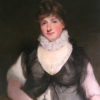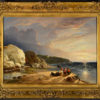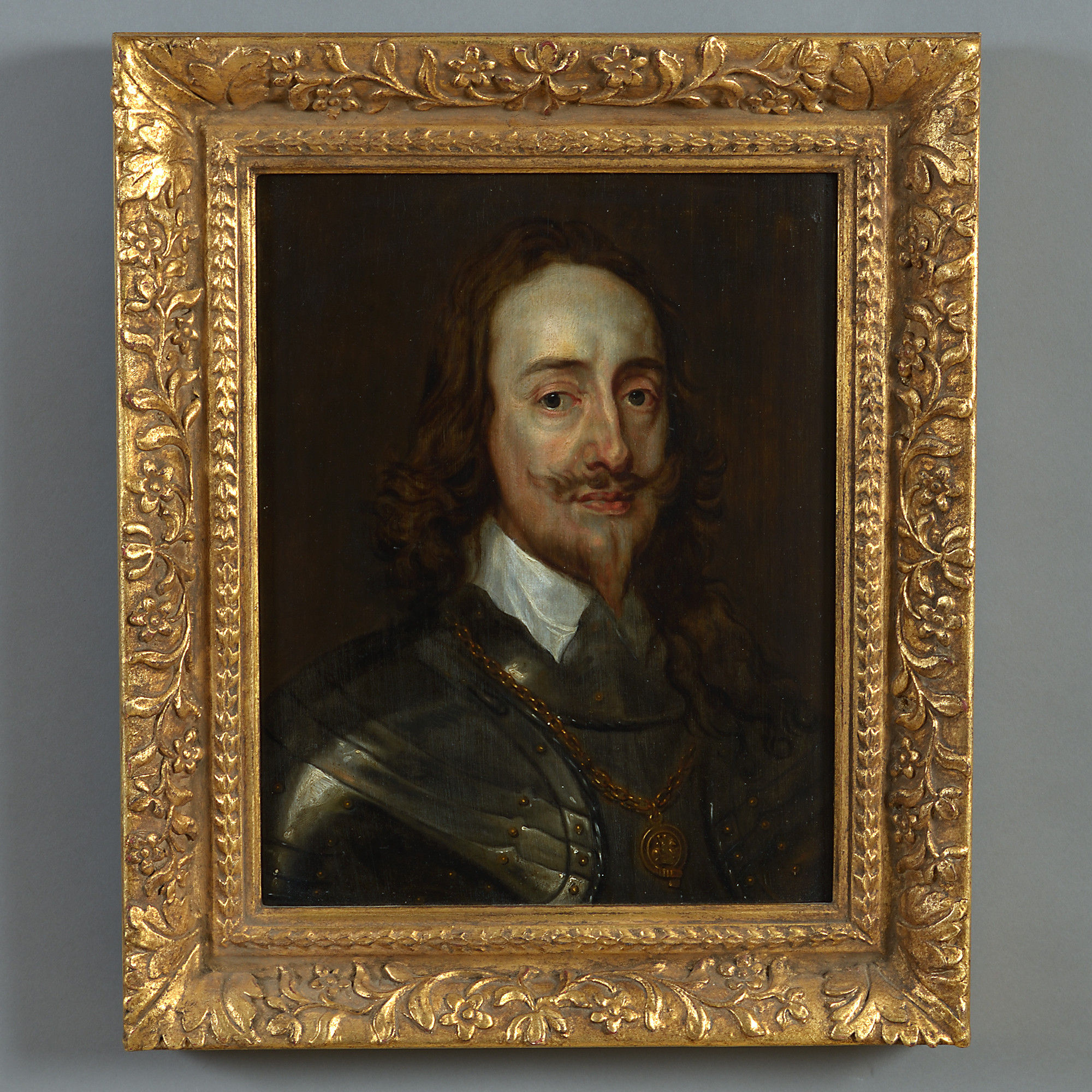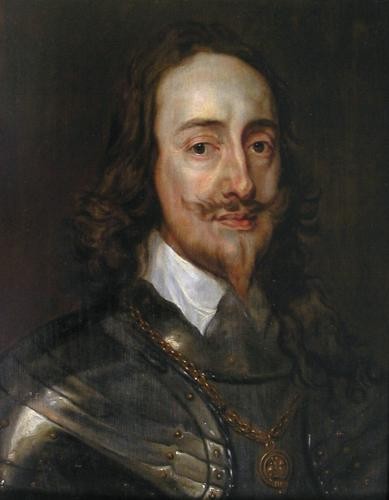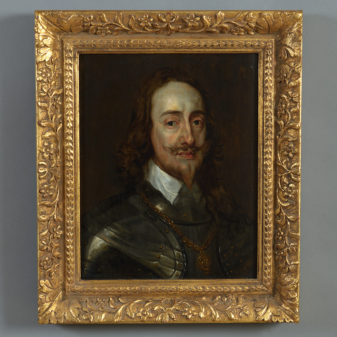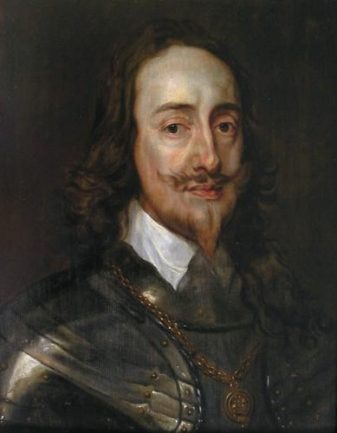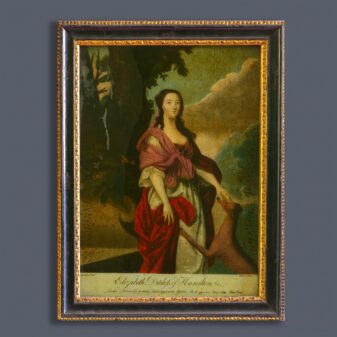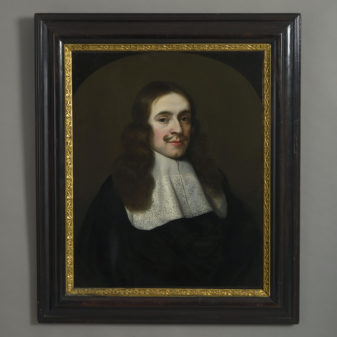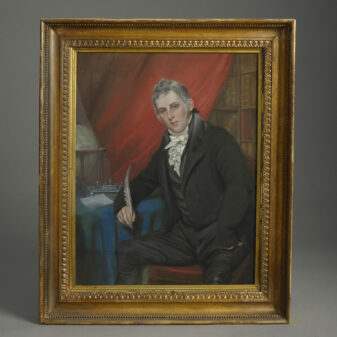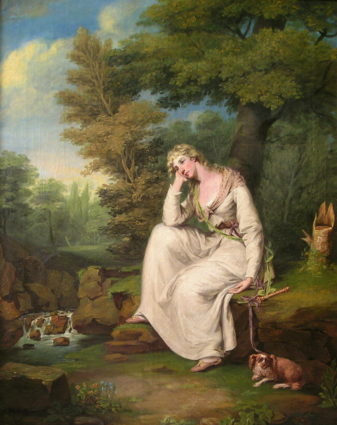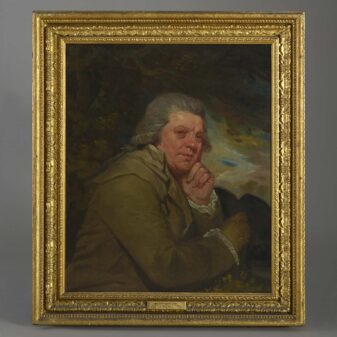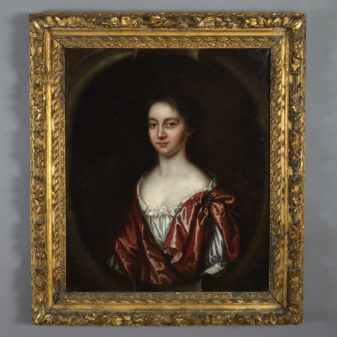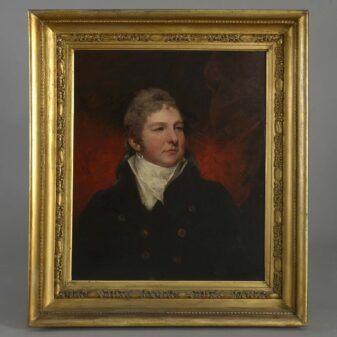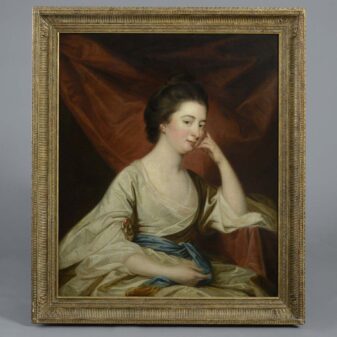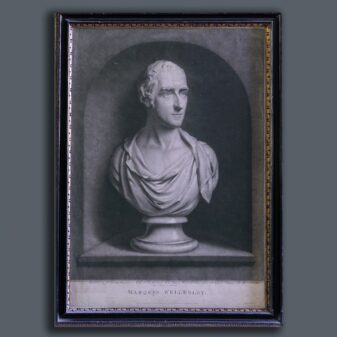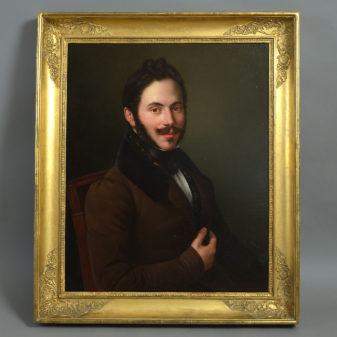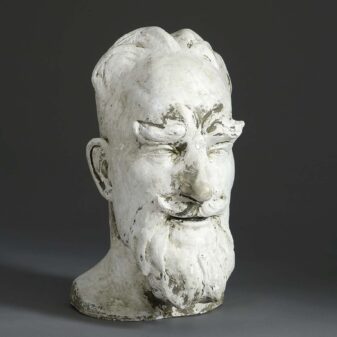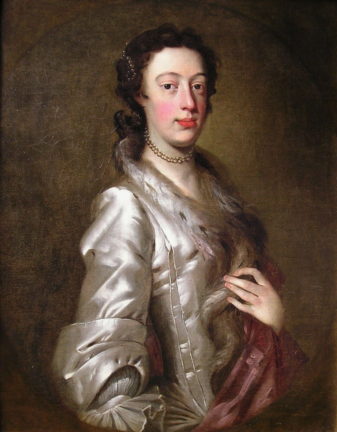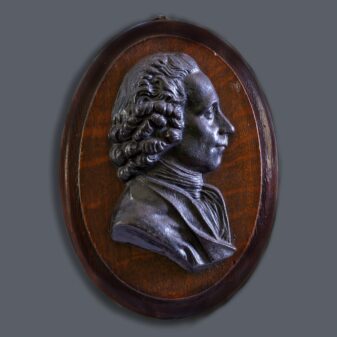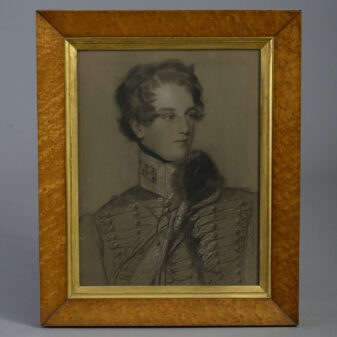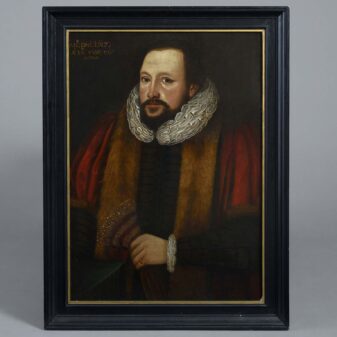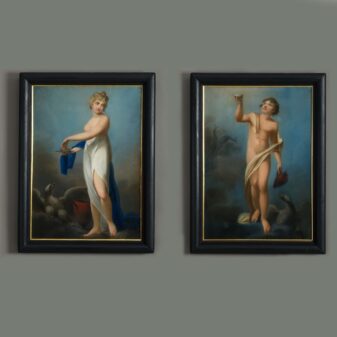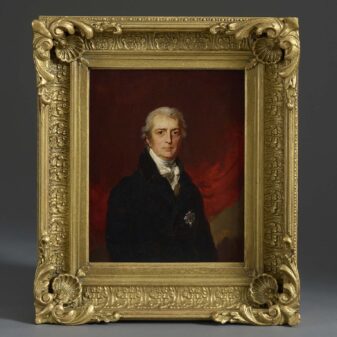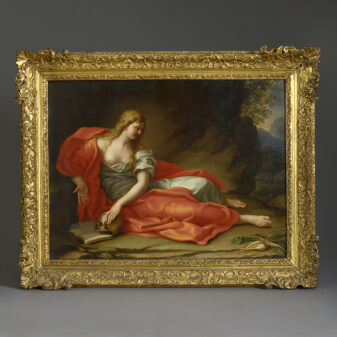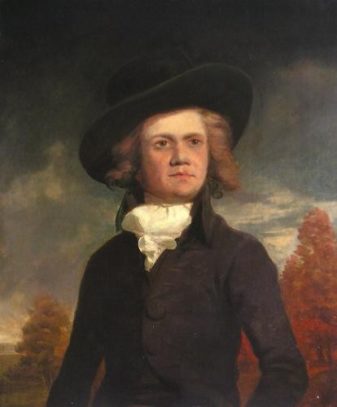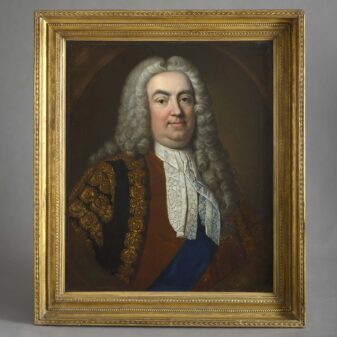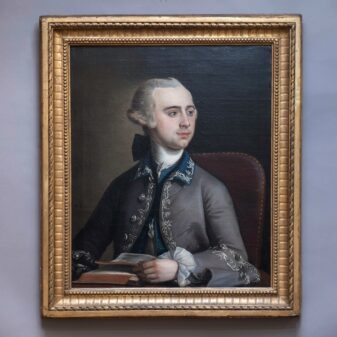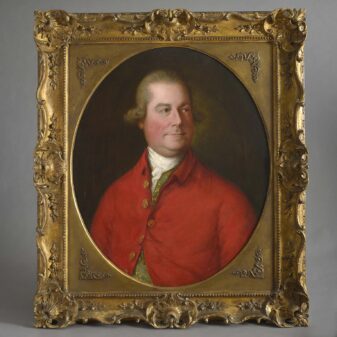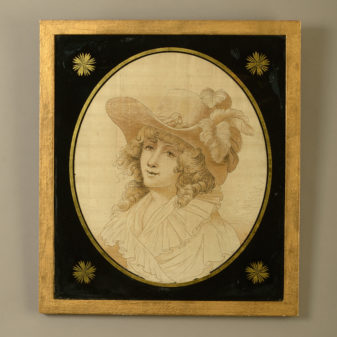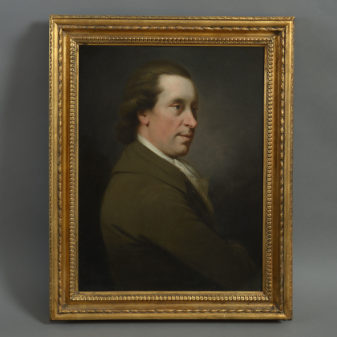Theodore Roussel, Portrait of King Charles I
£9,900
SOLD
Oil on panel; 15 ½ by 12 ¼ in; 39.5 x 31 cm; held in a gilt 17th century style frame
Provenance: John Boscawen Monro (1792-1847) and then by descent
This painting is a head and shoulders version, taken from a full length portrait of Charles I painted c.1636 which is now in the State Hermitage Museum, St.Petersburg. Depicted in full armour and wearing the chain of The Most Noble Order of The Garter, the King is shown as a military leader, unlike his earlier depiction by van Dyck as a father in the less formal group portrait of 1632 known as ‘The great Peece’ (Royal Collection). Bernini, the great sculptor, when in receipt of the important triple portrait of Charles by van Dyck remarked that there was a certain sadness in the monarch’s eyes, a feature which the artist has also identified herein. Although subtly different from the original, a certain melancholic air is perceptible in the King’s facial expression; a wetness around the eyes and slightly withdrawn look to the expression. This, compounded by the rendering of the mouth, creates an image less confident in tone than that of 1636. while difficult to date precisely these reduced copies of van Dyck’s works were produced around the middle of the 17th century, particularly during the time of the English Civil War and the King’s execution in 1649. They were much in demand as ‘closet pictures’, adorning the private walls of royalist supporters.
There has been a great deal of scholarly discussion concerning these small portrait panels. It is difficult to determine the ultimate authorship beyond doubt, (Karen Hearn: Van Dyck & Britain, Tate London, 2009 p.176). There is a group in the Royal collection which has been attributed to Remigius van Leemput (1607-1675). Ohers such as those at Woburn have been thought to be the work of Roussel and relate to this example. Stylistic differences clearly exist among them all and this enforces the fact that more than one artist was at work, copying van Dyck’s portrait in this manner. Yet, broadly speaking, distinctions can be made by comparison. Roussel’s attributed works generally display a greater linear definition, especially around the face. Existing works by Leemput are often more softly outlined. As can be seen very clearly in this portrait of Charles, both the face and the body are worked up from a light grey ground with the paint applied thickly in some areas and sparcely in others, with certain aspects, noticeably the hair, being strongly drawn with the brush. There is a strong sense of characterisation, something that is not that common with these copies, which makes this particular image of the King distinctive.
Theodore Roussel (Russell) was born in London in 1614, the son of Nicasius, a goldsmith and jeweller who left Bruges for England around 1567 and married his second wife Clara in 1604. She was the sister of the eminent portrait painter Cornelis Johnson with whom Theodore reputedly spent a nine year apprenticeship prior to working as an assistant to van Dyck. Following the master’s death in 1641, Roussel appears to have begun copying van Dyck’s portraits ‘very tolerably on small pannels’. However, no contemporary accounts have surfaced to corroborate this and confusion with what are now accepted as small works by Leemput have cast some doubt on the volume of work he undertook in this manner. There is a set of five bust-length portraits at Knebworth House, Hertfordshire, including a male portrait, signed and dated 1644; but generally, signed portraits by Roussel are rare indeed. Small panel portrait sets including works attributable to both Leemput and Roussel (some copied directly from van Dyck) can be found at Woburn in Bedfordshire, Southside in Wimbledon and Knowle in Kent, as well as examples in the Royal Collection.
By the early nineteenth century this portrait was recorded as being in the collection of John Boscawen Monro (1792-1847) and it has descended through this family until recent times. Monro, was a barrister in London during his early working life and a label on the reverse of the panel states that he ‘had it hanging in his chambers in the Middle Temple where he lived as a young man’. He was a relative of Dr. Thomas Monro, the artist and physician.

